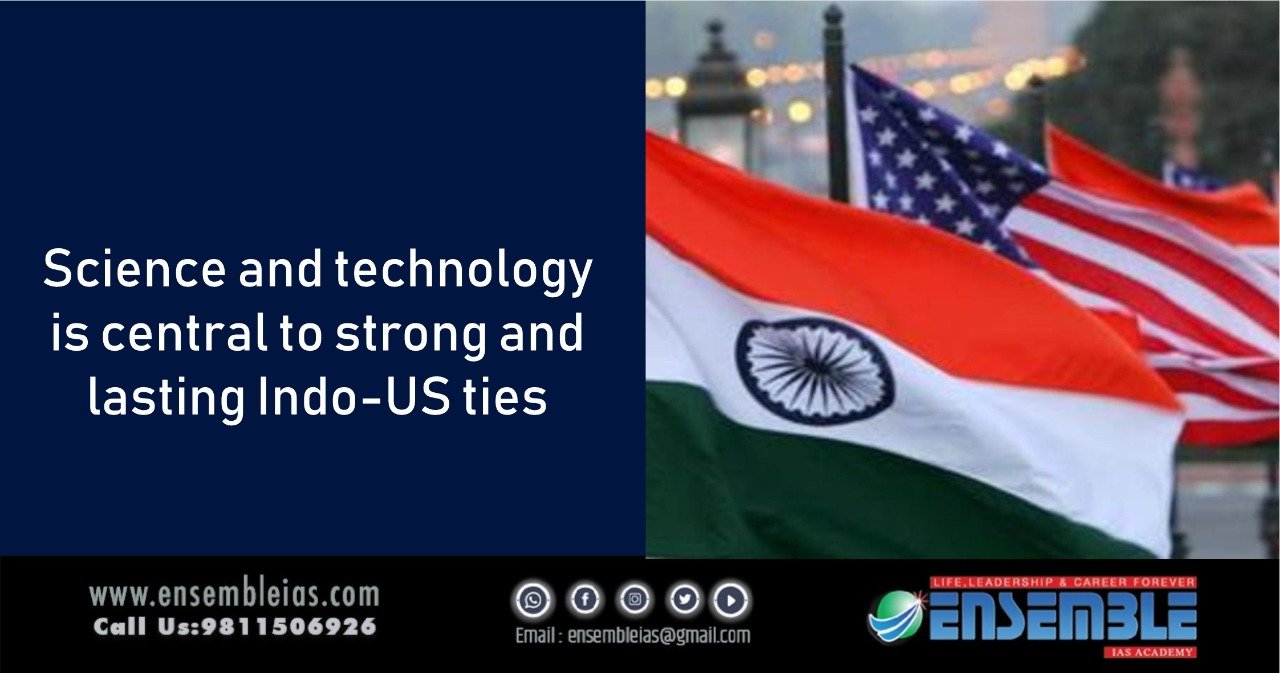Stages of India US strategic relationship:
- Second term of the Bill Clinton Administration
- Civil Nuclear Agreement during the administration of George W Bush
- Support for India’s seat at the United Nations Security Council, during Barack Obama’s tenure
The Newly developed impetus to the India-China relationship is due to:
- China being more aggressive and assertive internationally
- The bipartisan support in the US Congress
- The influential India-American community
- The role of US business leaders who see India as the next big production centre and market
To buy our online courses: Click Here
- India wants to grow economically, militarily and geopolitically, and thinks that a stable and strategic relationship with the US is in India’s interest.
Analysis: Not disregarding the value of the defence equipment, the deciding factor of the future wars is going to be science, technology and Trade. Therefore, the focus in the India-US relationship needs to shift to science, technology, and trade.
What measures can both countries take to achieve this?
First, India and the US need to jointly establish 100 chair professorships in frontier areas such as Artificial Intelligence (AI), genome technology, nanotechnology, deep ocean exploration, quantum computing, clean energy, and functional materials, and choose their best academics to work in both countries with complete freedom to move, interact and jointly work on those projects.
Second, they need to establish a new joint research council with at least $10 billion funding to support such research projects. Funds for the proposed research council may come from public and private entities and individual donors, with a prominent India-American leading the effort.
Third, each of India’s top 20 universities should choose a partner university in the US with a defined budget for research, joint studentships, and a mechanism of free-flowing faculty between them.
Fourth, research programmes on translational areas useful in critical sectors such as agriculture, services and pharmaceuticals should be established.
Fifth, discussions on science and technology will not yield dividends unless a robust trade policy is in place. Successive US administrations have indeed wanted to push trade with India to the forefront. However, India has been reluctant due to its domestic compulsions. In critical sectors such as agriculture, reform in India will take time to overcome tariff and non-tariff barriers. The recent farmers’ agitation gives an idea about the contentious nature of agricultural reforms. For the US, scientific collaborations and selling technology to boost productivity for Indian farmers should take precedence over pushing dairy and other farms produce to the Indian market. India needs to invest heavily in infrastructure, both physical and intellectual, and in technology to authenticate agricultural products to help farmers produce internationally competitive produce. India also needs to open up its services, finance, legal, health care and pharmaceutical sectors to US companies. It is unacceptable that the US goods and services trade with India is less than $150 billion compared to nearly $630 billion with China.
Conclusion:
- India and the US can be true partners through joint efforts in:
- Making the next generation of quantum computers,
- Achieving breakthroughs in the use of AI,
- Making genome sequencing and analysis affordable,
- Designing and building the next generation of airplanes running on clean energy,
- Making the first woman pair, one Indian and one American, land on Mars.




